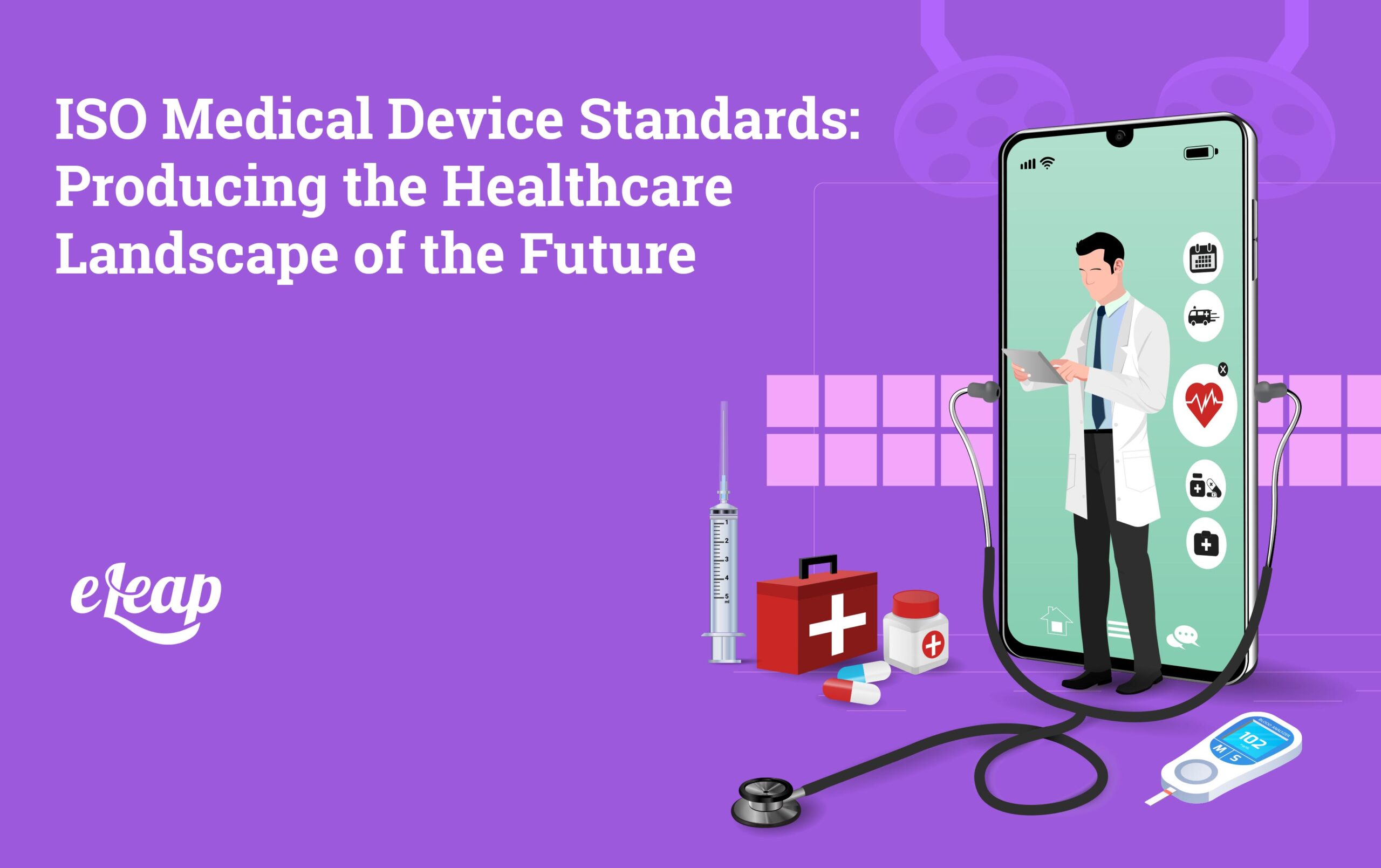ISO Medical Device Standards: Producing the Healthcare Landscape of the Future

Guaranteeing the excellence and safety of medical devices is severe in the rapidly changing healthcare sector. The International Organization for Standardization, or ISO, has been essential in founding guidelines for making, producing, and applying medical apparatus. This article explores the world of ISO Medical Device Standards, observing their development, basic standards, actions for compliance, and effect on innovation.
The development of ISO Medical Device Standards

The history of the ISO Medical Device Standard is vast, spanning multiple periods. The ISO standards, which cover many sides of medical device growth and use, were recognized in response to the request for standardized processes in the healthcare trade.
ISO has made famous advancements in making medical device principles over the years. These accomplishments result from the helpful efforts of regulatory activities, healthcare experts, and industry specialists.
Important ISO Medical Device Standards
Quality Management System, ISO 13485, the basis for an extensive quality management system created mainly for the medical device division, is established by ISO 13485.
It includes conditions for post-market investigation, growth, production, and design.
ISO 14971:
Management of Risk An essential component of developing medical devices is risk management. A methodical strategy for detecting, assessing, and reducing hazards connected to medical devices throughout their lifecycle is offered by ISO 14971.
Biological Evaluation (ISO 10993)
To assess the possible impact of medical devices on live tissues and organisms, ISO 10993 provides a set of guidelines for physical safety.
Procedure for Compliance and Certification
It takes navigating complicated regulatory standards to become ISO-certified. Organizations must match their processes with ISO standards and undergo extensive evaluations to ensure compliance.
The ISO certification process includes internal audits, management reviews, and cooperation with certification authorities to demonstrate dedication to quality and safety.
ISO Standards’ Effect on Innovation
Others claim that following ISO standards stifles innovation. Nonetheless, prosperous companies strike a careful balance, using regulations to improve product safety and encouraging an innovative culture.
Several success stories confirm that ISO standards have a beneficial effect on innovation. Businesses that put compliance first frequently see increased customer trust and market competitiveness.
Attempts toward Global Harmonization
ISO standards encourage cooperation between various regulatory agencies, which helps to bring about worldwide harmonization. This alignment facilitates international trade by making it easier for medical devices to enter the market.
In addition to streamlining regulatory procedures, global standardization helps firms by lowering the need for repeated compliance audits. Consequently, this speeds up the launch of products in a variety of marketplaces.
There are difficulties in putting ISO standards into practice. Common barriers include resource limitations, aversion to change, and difficulty bringing current procedures into compliance with strict standards.
Successful employers use tactics including employee training and Competency Assessment, staged implementation plans, and cultivating a quality culture. Reaching the full potential of ISO compliance requires overcoming these obstacles.
Ensuring ISO Standards Promote Patient Safety
Patient safety outcomes have directly improved as a result of ISO standards. Case studies from the real world demonstrate how following ISO standards avoided problems and guaranteed patient safety.
ISO standards are a preventative mechanism against possible mishaps. An organization can reduce the possibility of unfavorable events by including quality assurance and risk management in the development process.
Industry Views of ISO Standards
Conversations with Sector Specialists
The perspectives of professionals in the field offer a comprehensive comprehension of the effects of ISO standards. Professionals from manufacturing, healthcare, and regulatory agencies that were interviewed provided insight.
Comments and Views Regarding ISO Compliance
Businesses that have successfully completed the ISO compliance procedure often share valuable feedback and insights with each other. Others starting the certification path can benefit from their experiences.
Prospects for ISO Medical Device Standards in the Future
The field of developing medical devices is constantly changing. The anticipated revisions in ISO standards reflect the industry’s dedication to keeping up with growing issues and technical improvements.
Integrating IoT, AI, and other cutting-edge technology for ISO standards presents new opportunities and problems. Subsequent updates will probably consider the particular factors related to these developments.
Case Studies: Triumphant Tales of ISO Certification
Real-world Instances of Successful Results
Examining instances of businesses that have obtained ISO certification offers concrete proof of the advantages. Those looking to improve their quality management systems might draw inspiration from these case studies.
Lessons Discovered During Execution
There are lessons to be learned from every triumphant ISO certification tale. Comprehending these establishments’ obstacles and tactics can direct others along a comparable route.
In summary, the foundation of the healthcare sector is provided by ISO Medical Device Standards, which offer a framework for innovation, safety, and quality. Respecting these guidelines guarantees legal compliance and promotes an ongoing improvement culture. The standards will change along with the industry to reflect new problems and technological breakthroughs.
- How long is required for an organization to become certified by ISO?
The business’s complexity, size, and current procedures affect the ISO certification process. The procedure can take several months on average.
- Do big makers of medical devices have to follow ISO standards?
No, companies of all sizes creating, producing, and marketing medical devices are subject to the ISO standards.
- How do regulatory agencies contribute to the creation of ISO standards? Regulatory organizations actively participate in creating and modifying ISO standards, guaranteeing compliance with laws and regulations worldwide.
- Can ISO standards keep up with the fast-changing healthcare technology landscape?
Yes, ISO standards are updated frequently to reflect new developments in technology and emerging.